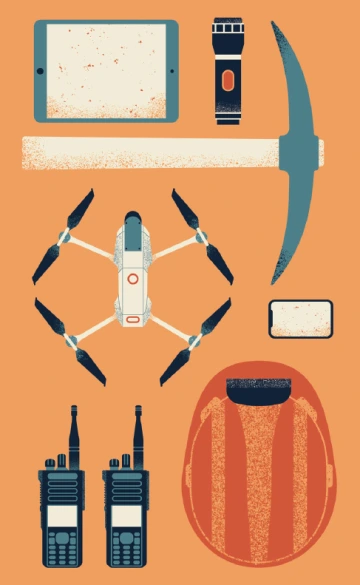
As one of the most technologically advanced industries today, mining and mineral extraction require highly skilled workers. The University of Arizona is prioritizing the health and safety of these workers, using AI and machine learning to reduce accidents and injuries in underground mines.
Nathalie Risso, assistant professor in the College of Engineering, led development of an algorithm to visually scan worksites for issues with PPE compliance. To train the algorithm, a campus-wide invitation rapidly populated a database of 2,000+ photos of students in mining gear, ensuring diversity representative of multinational
mining workforces.
Researchers have also created an app that allows anyone – even those without safety expertise – to use the cameras in smartphones to determine risks for collapse and falling rock. Users capture video or photos that an algorithm analyzes in real time. U of A’s San Xavier Underground Mining Laboratory provided visuals to train the algorithm, and the app will crowdsource more data from ongoing use, continually refining its sensitivity to hazardous conditions.
A third project uses machine learning to train autonomous drones and robots for rescue operations. The devices can assess injuries, detect hazards like toxic gasses and discover safe exit paths. Above-ground vehicles work in concert with the AI bots, overcoming potential connectivity issues and processing data on the spot.
The innovations have use in any high-risk emergency (think earthquakes or nuclear plant malfunctions) as well as non-crisis scenarios, potentially including extraterrestrial mining operations.
